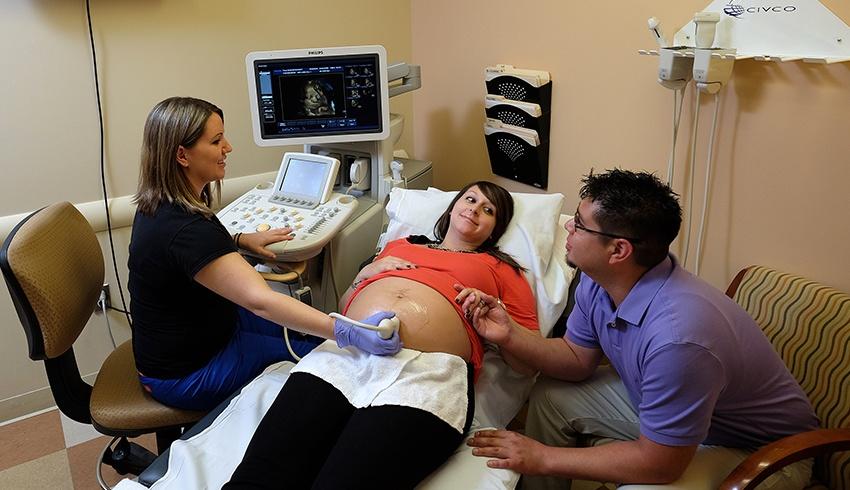Ultrasound technology is amazing. By using nothing but sound waves, it can create detailed images of the body’s structures and tissues in a completely non-invasive manner. It’s safe, painless, and radiation-free. So how does it work?
How does an ultrasound work?
According to the Radiological Society of North America, “Ultrasound imaging is based on the same principles involved in the sonar used by bats, ships, and fishermen. When a sound wave strikes an object, it bounces back, or echoes. By measuring these echo waves, it is possible to determine how far away the object is as well as the object’s size, shape, and consistency (whether the object is solid or filled with fluid). In medicine, ultrasound is used to detect changes in appearance, size or contour of organs, tissues, and vessels or to detect abnormal masses, such as tumors.” Ultrasound imaging uses a small transducer (probe) to send high-frequency sound waves into the body. The probe collects the sounds that bounce back, and then a computer uses those sound waves to create an image. Ultrasound examinations do not use radiation (as used in x-rays), thus there is no radiation exposure to the patient. Because ultrasound images are captured in real-time, they can show the structure and movement of the body’s internal organs, blood flowing through blood vessels, or the movement and heartbeat of an unborn baby.
Why is ultrasound used?
An ultrasound can help to diagnose a variety of symptoms including:
- Pain
- Swelling
- Infection
- Lumps
Ultrasounds are a useful way of examining many of the body’s internal organs, including the:
- Heart and blood vessels, including the abdominal aorta and its major branches
- Liver
- Gallbladder
- Spleen
- Pancreas
- Kidneys
- Bladder
- Uterus, ovaries, and unborn child in pregnant patients
- Eyes
- Thyroid and parathyroid glands
- Scrotum (testicles)
- Brain in infants
- Hips in infants
- Spine in infants
“Doppler ultrasound, a special application of ultrasound, measures the direction and speed of blood cells as they move through vessels. The movement of blood cells causes a change in pitch of the reflected sound waves (called the Doppler effect). A computer collects and processes the sounds and creates graphs or color pictures that represent the flow of blood through the blood vessels.” –Radiological Society of North America.
Ultrasound technology is truly astonishing. It can diagnose a huge array of conditions without pain, radiation, invasive procedures, or risk to even the most sensitive patients.
